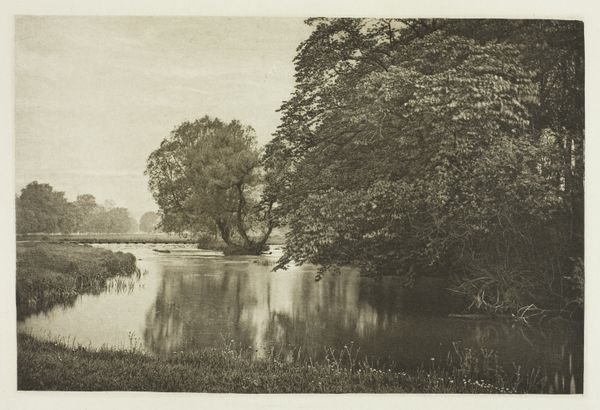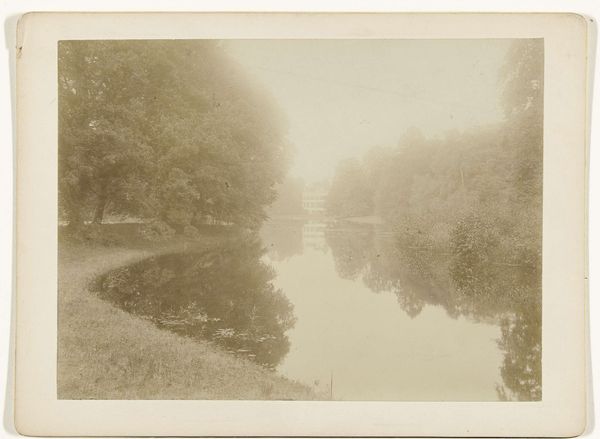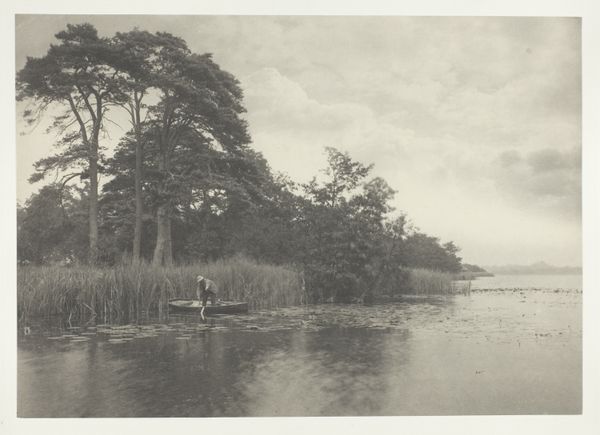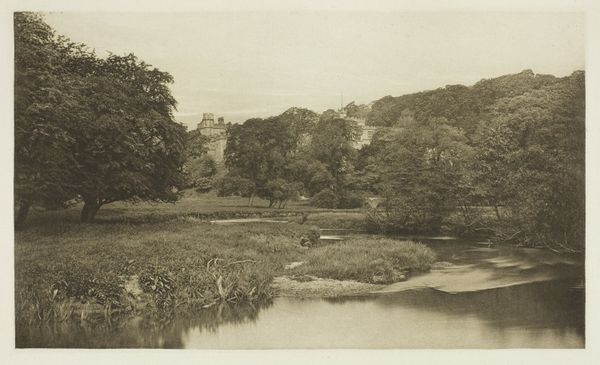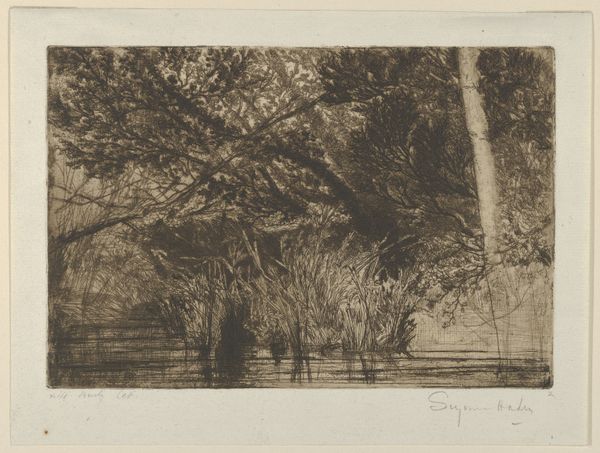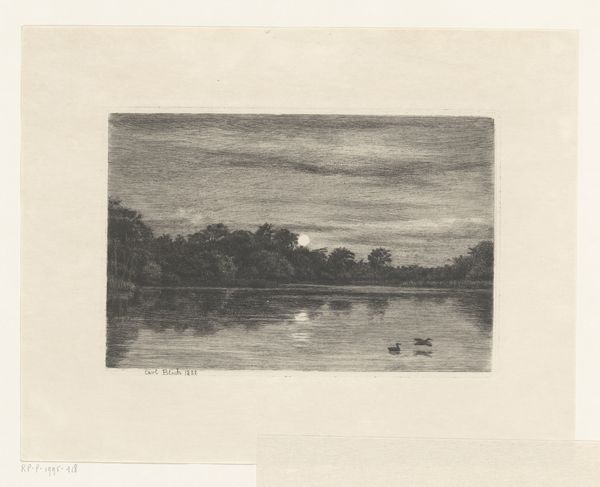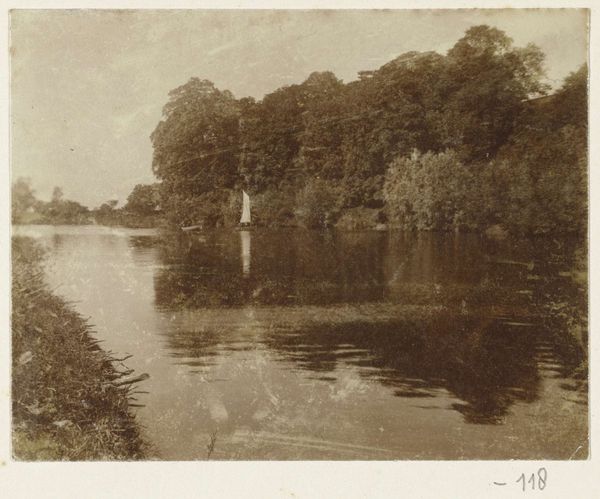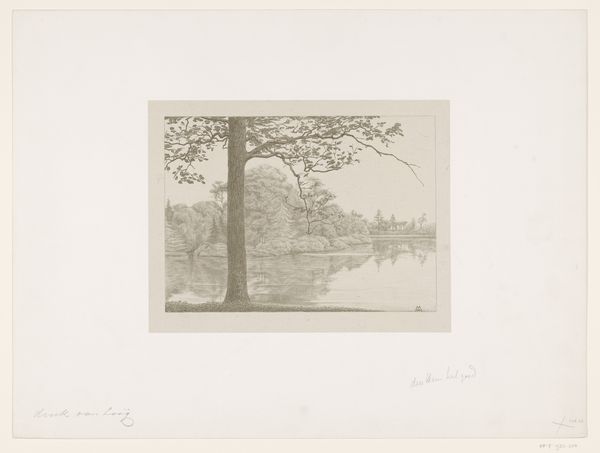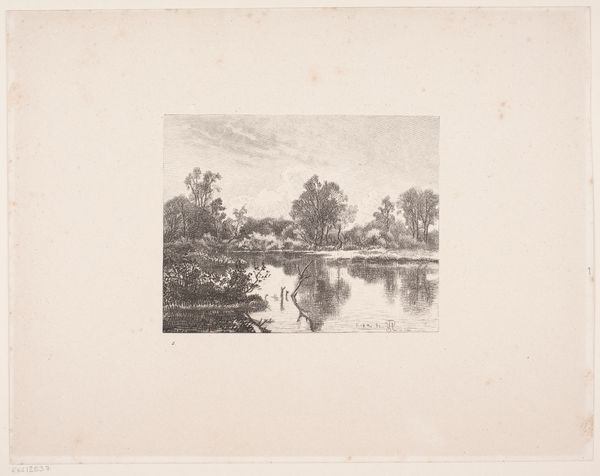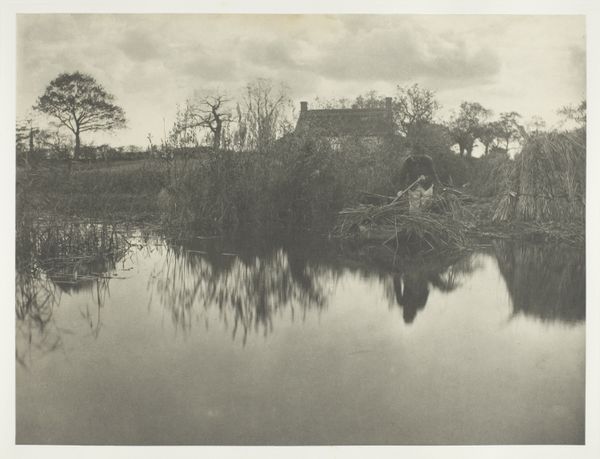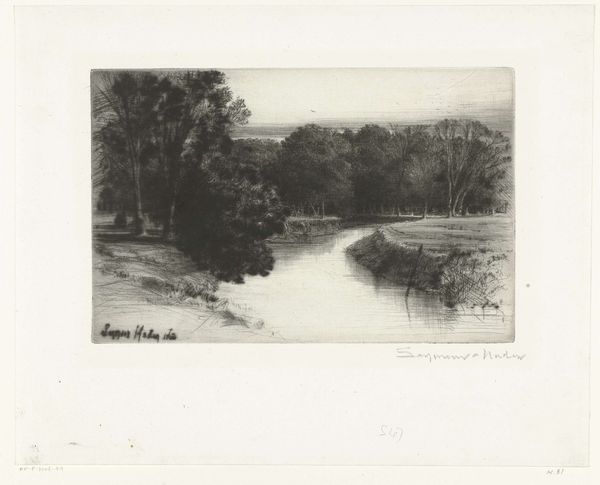
Dimensions: height 147 mm, width 233 mm, height 200 mm, width 281 mm, height 210 mm, width 303 mm
Copyright: Rijks Museum: Open Domain
Editor: Here we have James Craig Annan’s “Landschap met water nabij Bolney,” taken around 1910. It’s a photograph rendered in a soft, almost painterly style, and it feels incredibly tranquil. What captures your attention when you look at this piece? Curator: What strikes me is the conscious pictorialism at play. Annan, working during the Photo-Secession movement, wasn't just recording a scene; he was crafting an image that could stand as art. This landscape isn't just a representation of nature; it's a statement about photography's potential to be expressive and aesthetic, rather than purely documentary. Think about the context of museums and art spaces, how photos like these started finding their place on gallery walls. Why do you think this was so important? Editor: I suppose, at the time, photography wasn’t always considered “art.” So presenting it in this light, almost like a painting, validated it as a creative medium. It was pushing boundaries. Curator: Precisely! And that push had profound implications. Consider the role of exhibitions in shaping public perception. Pieces like this entered a space traditionally reserved for painting and sculpture. How does displaying photography in a museum change our understanding of what art can be and who gets to decide its value? Editor: That makes you think about the power of institutions in shaping artistic taste and recognizing emerging forms of art, like photography at the time. Now I see it as part of the broader cultural shift in the early 20th century. I thought I was simply admiring its stillness! Curator: Absolutely. It is never JUST the visual experience; context is part of the aesthetic value. We decide to validate something as part of art. Hopefully this has enhanced how you understand art and photographic production. Editor: This has expanded my understanding so much! Thanks!
Comments
No comments
Be the first to comment and join the conversation on the ultimate creative platform.
